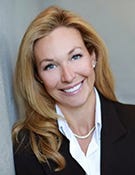Reorg for Dummies: Q&A with Microsoft’s Alyssa FitzpatrickReorg for Dummies: Q&A with Microsoft’s Alyssa Fitzpatrick
Both Microsoft and their partners recognized the need for a better way to do business together, but change is never easy.
July 12, 2017


Lynn Haber
Microsoft Corporate Vice President of Worldwide Channels and Programs, Gavriella Schuster, calls Microsoft’s latest reorganization “the biggest change that the company has made to its sales model in more than a decade” – change that both partners and company executives agree was a long time coming.
That’s all well and good, but with massive change comes massive confusion; partners are unsure how this change will impact their partnering experience with Microsoft or their bottom line – especially since the reorganization is resulting in layoffs that target thousands of employees, mostly in the sales organization.
At Microsoft Inspire, the company’s global partner conference being held this week in Washington, D.C., many channel partners expressed uncertainty about whether they still had a partner manager. In some cases partners said that whole partner teams were let go.

Microsoft’s Alyssa Fitzpatrick
So, we took the opportunity to chat with Alyssa Fitzpatrick, Microsoft’s general manager, worldwide channel sales, about the new One Commercial Partner business and what Microsoft’s partners need to know about the reorganization. Fitzpatrick joined Microsoft in July 2016, bringing with her 25 years of channel experience at companies such as CA Technologies, Intel Security, Informatica and Oracle.
Channel Partners: Let’s start by taking about the reorganization and what’s most relevant to partners.
Alyssa Fitzpatrick: The most important thing that partners need to understand is that when we created One Commercial Partner in February, the purpose was to bring together all the different organizations within Microsoft that do partnering motions. What we found out when we did that, and in the months since then, was that there were best practices all over the place in the different partnering teams. And, a lot of the best practices were similar because each partner group had built similar go-to-market strategies, engines and programs to support their smaller partner ecosystems.
So, within the bigger partner ecosystem we consolidated all of that. One of the biggest effects is that our programmatic approach has been reduced from over 150 programs down to six core programs. That gives our partners simplicity in their engagement model.
CP: What does this simplicity mean to partners?
AF: The simplicity is not just about what’s going on behind the doors at Microsoft – how we’re organized as one team and not stumbling over each other in the different business groups or segments. Externally the partner experience is simplified. Partners now have a single point of contact rather than having to know how to navigate all of …
…Microsoft to do different kinds of business with us. You only go one place and we’ll help you.
CP: How does One Commercial Partner and Microsoft’s prioritization of six industry markets align?
AF: In the model that we’ve built there’s a partner management team – that single point of contact where we’ll have a partner manager aligned to each partnership, or what we call the “build with.” In the middle is the go-to -market where we take the things that we’re building – whether it’s solutions, assets, capabilities or offerings – to market aligned with industry.
When you look at the model, partner management is partner aligned; go-to-market is industry aligned; and the “sell with” is customer aligned. This gives us a simplistic model that says, we’re going to work with you, we’re going to build things and figure out how to go to market. We’ll address the customer need in each region through vertical specialization. Our “sell with” teams will all live in-territory and be aligned with customers in those territories, so that’s the customer-facing side.
CP: Is this model still in progress?
AF: This is it. We’re here. We spent time with our internal organization two days prior to Inspire to say this is how all of this is orchestrated.
CP: What are you hearing from partners?
AF: Well, the partners seem to love it because now they have clarity on their engagement model with us. The question I’m getting most frequently is, “Who’s my team?”
So, [I say] let’s get back into our areas when we go home from Inspire and we’ll network you to all the new resources that are covering you, bearing in mind that a lot of them are the same people, just in new roles. It’s the same population that they’ve engaged with, but there’s a very streamlined approach to what the individuals will do, whether they’ll be sellers or partner managers or go-to-market orchestration.
CP: Does this new model impact partner organizations differently by the size of their company?
AF: The segmentation isn’t by the size of the partner anymore. We used to do segmentation by those who sat in SMB or those that sat in corporate accounts or in enterprise. Now, all of our partners are managed by one partner management team. So, the segmentation – enterprise and small-media corporate (SMC) – is on the customer side.
Our partners can address any customer they want.
If you look at the engagement model, you have the partner manager side and the go-to-market. On the sell with, the customer-facing side, that model is segmented by enterprise and SMC. We have two different channel management motions – if it’s enterprise, our channel management teams are aligned with our account executives and they work hand in hand in a co-sell motion. In SMC, it’s 100 percent partner-facing so the channel manager is working to connect solutions and partners with the customer.
For the SMC, we’re going to have more …
… technical resources that will allow us to have a conversation with our partners that extends all the way through the last mile to the customer. That’s an area that we haven’t really been able to support because we didn’t have the resources in the space. This is something that we left to our partners in the past and now we’re helping them go there.
So, we’re going to go deeper with our enterprise customers, but also deeper with our partners in helping them get to that final customer solution.
CP: That’s a ton of partners you’re talking about and a lot of resources. Where are those resources coming from? Is this where distributors come into play?
AF: Yes, that’s our scale motion. When we’re talking about 64,000 partners worldwide transacting, we want to manage all of them. We manage them through our two-tier partners and we’re working to develop their channel. That is the only way we can scale, so we’re very reliant on it. And that’s why we’re infusing as much as we can for their success and our success down the road – and we’re giving the customer a better experience.
CP: So, where is Microsoft in this process of helping distributors get up to speed?
AF: We have worked with them to help them understand the consumption model, how to build out their Azure marketplaces and how to load their Azure marketplaces with the types of solutions that their customers are demanding, worldwide.
One of the greatest benefits of the distributor channel and their ecosystem is that partner-to-partner engagement; we’re going to help stimulate that by bringing additional engagement with our ISV team.
CP: There’s so much more to talk about, but how about we wrap this up for now? What else would you like to say to partners?
AF: [This model] gives partners a “yes” to every one of their questions. “Can I sell to this customer?” “Yes.” “Can I sell this solution?” “Yes.” “Am I going to get compensated the way that your field is compensated?” “Yes.”
To reduce conflict in the market, partners should go to their channel managers; that’s where we’ll understand how we’re going to engage with the customers.
So, it gives our partners many avenues to go down and a single point of contact from which to start.
Read more about:
AgentsAbout the Author
You May Also Like


